
There is always a huge interest in digital marketing trends and innovation in marketing at the beginning of the year. And rightly so, since reviewing innovation in digital marketing, technology, and platforms for the year ahead can help marketers identify new opportunities that agile businesses and marketers can tap into… if they’re looking in the right place and know the right questions to ask…
Each year, for the last ten years, we have assessed the digital marketing landscape to help give recommendations on the digital marketing trends marketers should focus on in the future.
- Improved reach via digital channels
- Increasing digital engagement of your audiences
- Better managing digital marketing to integrate it into marketing activities.

From reviewing the latest hype cycle, and from my recommendations on innovations in this post, here are the core marketing themes that we think will be most significant for marketers considering their adoption of digital technology in 2021 and beyond:
- Consumer privacy and consent is significant emerging technology on the marketing curve, but it’s surprising that it’s not on both curves, particularly since one of the biggest trends in advertising during 2020 are the steps by Apple, Google and Mozilla to increase privacy controls for their users in their browsers which threatens to significantly shake up the advertising models of Facebook, Google and the ad networks.
- Personalization is referenced as personification. This is now entering the ‘trough’ also. The evaluation below explains why Gartner prefers to use personification rather than the more widely used personalization to describe this technique.
- Marketing Hubs (clouds) and email automation are nearing widespread adoption. Many of the techniques described in this article are already available if you use a capable marketing cloud.
- Fewer new innovations than in previous years since the innovation trigger part of the marketing curve is sparse, suggesting relatively few genuinely new technologies are emerging. Indeed, I’m sure visual search has previously appeared here. This suggests to me that a maturity in tools has been reached and genuinely new techniques will be rare in future.
Right, let’s get to the detailed recommendations on innovations which we have grouped by the RACE customer lifecycle activities to show how new techniques can be applied to marketing activities.
REACH : Increasing awareness through digital marketing medias
Within media, we’ll concentrate on changes to search and social media marketing, the two channels that are most important to marketers – although the use of programmatic display advertising continues to increase amongst larger brands.
Recommendation 1. Organic search: Monitor core updates and EAT
During 2020, core updates have had a significant impact on organic visibility for businesses in some sectors as these 4 case studies on the impact of Google’s latest core updates shows.
In their advisory Google explains these like this:
“Each day, Google usually releases one or more changes designed to improve our search results. Most aren’t noticeable but help us incrementally continue to improve.
We aim to confirm such updates when we feel there is actionable information that webmasters, content producers, or others might take about them”.
The advisory and the more recent case studies often reference the perennial importance of content quality affecting Expertise, Authority and Trust signals. So anyone serious about competing in search should grab a copy of the latest search quality guidelines to benchmark their content.
Recommendation 2. Organic search: Look at opportunities from structured data and the SERPs features.
I respect Bill Slawski as a close follower of the latest Google patents and innovations. So, when he pronounces structured data will increase in importance and evolve it’s worth listening.
In this article, Bluearray gives the predictions of how structured data will change in future. These predictions are already coming true as in Sept 2020 we saw a first example of structured snippets within SERPs which is evidence of a future trend.
Recommendation 3. Organic search: Voice search remains hyped but will deliver little for most businesses
We agree with the views of Cameo Digital who explain the limited impact of voice search when they comment that regardless of whether the uptake for voice search increases, the game stays virtually the same for SEOs. They explain that Voice Search involves using a spoken command to retrieve the information you want from search engines with two types of voice search, each differing in their type of output. Only the first of these, however, is relevant to SEO:
- Type 1: When a user chooses to use spoken voice commands as opposed to typing a query into Google. This is treated as a normal web search, the data of which will be collected in Google Search Console, so SEO as normal.
- Type 2: When a user chooses to use a spoken voice command in order to receive a spoken answer. This is the case with many smart speakers such as Google Home and Amazon Alexa. These searches are not logged in Google Search Console and have very little relation to SEO.
So, businesses can tap into any voice-based changes in search behaviour by focusing on the fundamentals of SEO such as keyword research, on-page optimization best practices, structured data and creating quality content with high Expertise-Authority-Trust to fit evolving search behaviours, including more conversational queries.
We would add that changes in keyword behaviour prompted by rising local voice queries are important to optimize for if you target local buyers.
Recommendation 4. Paid search: Assess the use of machine learning optimization carefully
Although our research shows that the vast majority of businesses say they don’t use machine learning internally, many will use it as an external service since it is a big part of organic and paid search and in particular offers options in Google Ads.
You may have noticed the ‘SMART’ prefix being attached to more and more Google Services. The aim is to help businesses manage the complexity of ad targeting to increase ROI, while of course protecting Google’s ad revenue. Some of these should be treated with caution. For example, Smart Goals in Analytics assesses what a positive marketing outcome is rather than the business specifying it, which is preferable.
Smart campaigns in Google Ads have been introduced to simplify the complex process of managing Google Ads for small businesses. Yet there are large downsides in reduced insight and control over campaigns meaning that small businesses may outgrow this solution.
Some see the application of AI as reducing control and they are right to question the ROI. But my view is that businesses should embrace Machine Learning and develop the skills to understand it. For example, Google’s Smart Bidding can help manage bidding across large product inventories on Google Shopping – but we have to question just how smart is Smart Bidding actually? This article from agency Precis introduces some of the mechanisms behind Smart Bidding for Google Shopping and suggests a practical approach to maximizing efficiency for your inventory. This article from White Shark Media gives further examples of the analysis techniques for machine learning that marketers should master rather than simply treating Machine Learning as a black box.
Recommendation 5. Ad optimization testing becomes more sophisticated as ad platforms develop
With more than two-thirds of digital ad spend now going to Facebook and Google, optimisation on these platforms is becoming ever more important. Yet research by the Boston Consulting Group shows that only 9% of marketers can accurately forecast the impact of a 10% shift in marketing spend.
Using attribution and creative optimization becomes more important to understand complex customer journeys across mobile and desktop devices and different ad placements. For example, on Facebook alone, an ad could appear in a variety of placements, such as in the Facebook News Feed, during Instagram Stories, Reels or within Instant Articles. These Facebook IQ case studies show how more advanced companies are working on ad optimization using Facebook’s new ad placement customization to reach their goals.
Recommendation 6. Review changing adoption of social networks, especially video social platforms like TikTok and Reels
During the pandemic, social network usage has naturally increased, so changing the relative importance of social networks as a method of generating awareness. TikTok is notable as a social video platform that has continued to grow in popularity globally as shown by this recent research from Global Web Index .
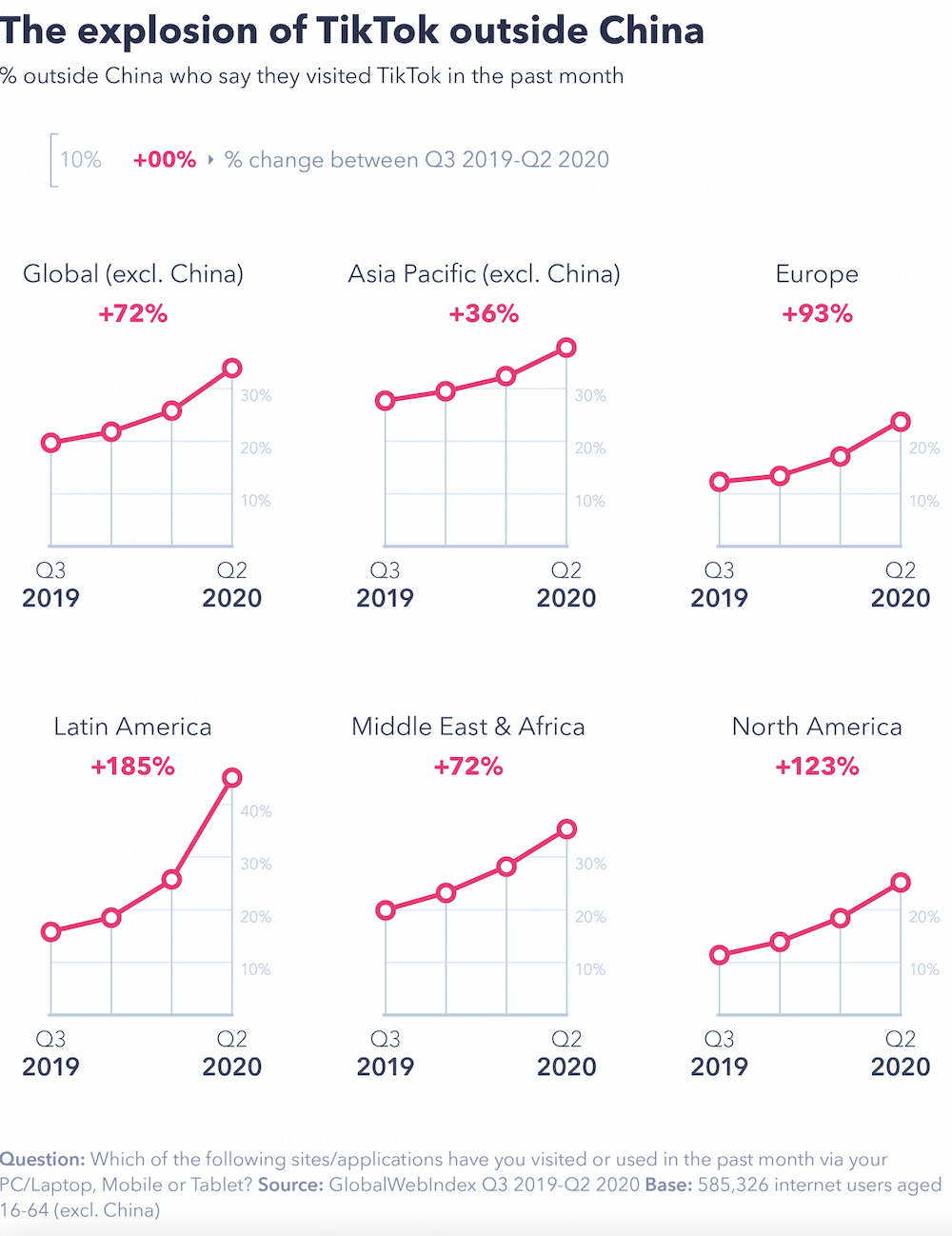
With TikTok expanding its advertising options and publishing stories of how its platform can increase purchase intent, it will be a platform to watch in 2021 as its offering is reshaped after its purchase. In response, Facebook has released Instagram Reels, so it will be interesting how brands use these short-form video platforms, for example, see our post showing how creators are using Instagram Reels.
Recommendation 7. Review engagement options for messaging platforms
Each of the social networks supports direct and group messaging and of course, there are many dedicated apps such as WhatsApp, Messenger and Snapchat.

Recommendation 8. Privacy Wars: Review the implications of increased consumer privacy protection on advertising effectiveness
It seems a long time since GDPR was launched in May 2018 and it has been helpful for enforcing more transparency on privacy with similar laws being enacted in US alongside many annoying cookie opt-in pop-ups. The latest developments in privacy see a standoff between the bigger players in digital platforms. Chrome has been increasing privacy while still protecting its advertising interests.
But a bigger change is brewing with Apple’s iOS 14 release with the impact on advertising options and tracking in the months ahead not yet clear, but garnering some dramatic headlines such as Apple iOS 14: Is Facebook And Google’s Worst Nightmare Coming True? (Forbes) and iOS 14 privacy settings will tank ad targeting business, Facebook warns: Facebook is worried that users won’t opt into tracking when given the choice. (Ars Technica)
ACT: Increasing digital marketing interactions through digital experiences and content
Recommendation 9. Consider adoption of design systems (most relevant to larger businesses)
Inside Design identifies the trend of an increased focus on design systems which it explains as a “collection of reusable components, guided by clear standards, that can be assembled together to build any number of applications“.
The efficiency benefits for businesses to reduce costs and increase conversion through common web design elements, and for users who have less need to learn different interfaces, are clear. But it does beg the question of the difference between a design system and a style guide or pattern library? Well, one consideration is the scope; design systems can be much broader than the web site patterns and style guides as designer Siw Grinaker explains:
“A design system maintains the visual and functional elements of your organisation in one place, in order to fulfill your brand principles through the design, realisation, and development of products and services. It may include a sketch library, style guide, pattern library, organisation principles, best practices, templates, codes, and more”.
This interesting design system case study from a designer at Airbnb explains the benefits and the practical approach. We applaud the transparency of Airbnb Design site where their designers share their approach to design innovation.
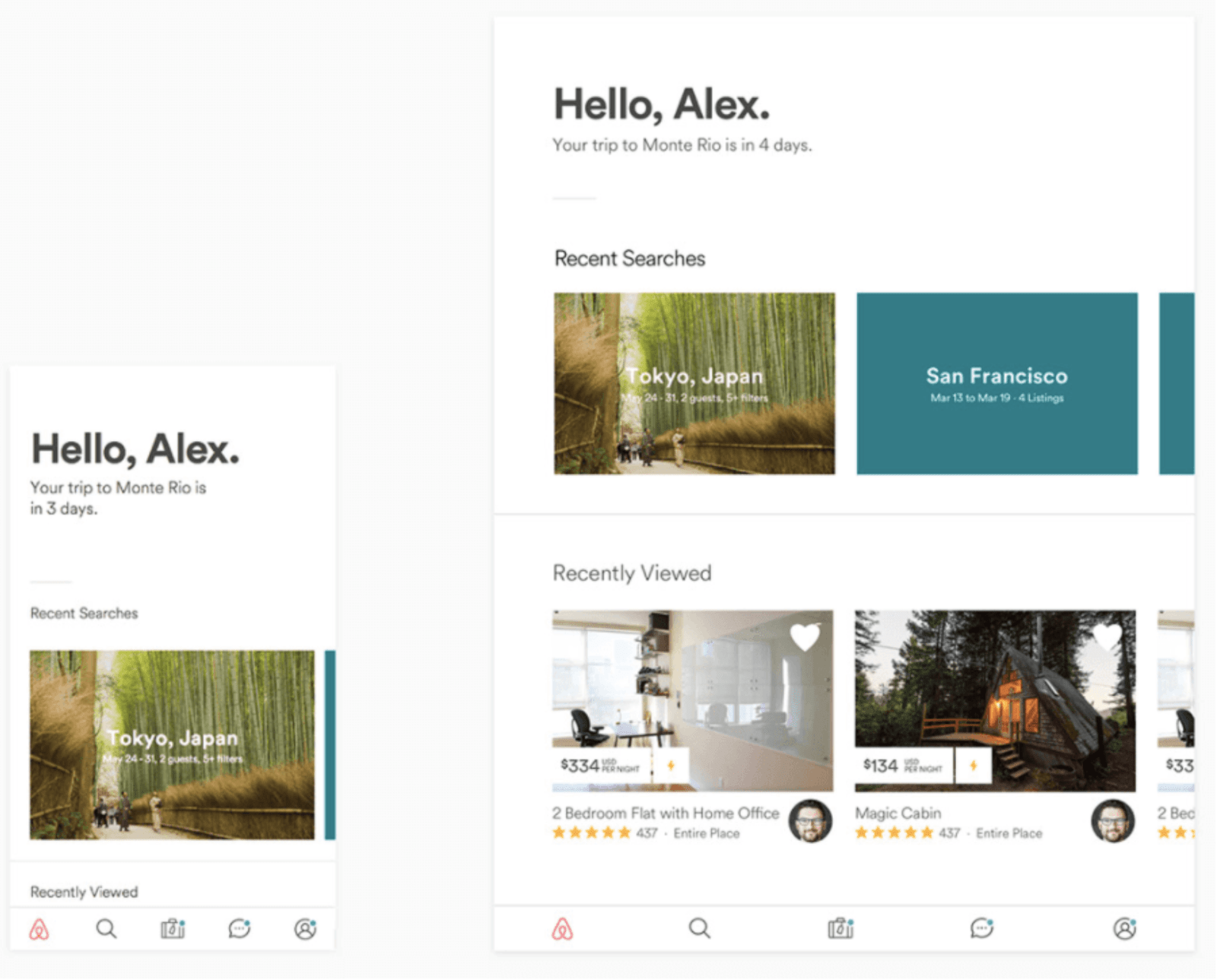
Recommendation 10: Ensure visual designs fit the zeitgeist?
Across all communications channels, first impressions are important, so trends in visual and graphic design can have an effect in developing preference for a brand. Certainly, we can all call out a dated web design consciously or sub-consciously.
Often, articles on web design trends are based on web designer or agency sites pushing the boundaries using new design technologies – and while these approaches may go on to inform brand and company sites, more typically they don’t. So we have to consider visual design trends across the most popular sites which our audience is familiar with to see whether a site. Venngage catalogues these web-graphic design trends that are likely to continue into 2021:
1. Muted Color Palettes
2. Color Gradients
3. Abstract & Dreamy Illustrations
4. Heavy Simple Fonts
5. Flowing Lines & Shapes
6. Genuine & Authentic Stock Photos
7. Minimalist Landing Pages
8. Better Branded Animations
Recommendation 11. Consider innovations in interaction design and video to boost conversion
UX design have this great summary, with examples, of what they see as the latest interaction design trendswhich we can see continuing into 2021. Our pick of interactive design techniques for marketers to be aware of include:
- Micro-interactions: Interactions beyond simple clicks on static links to other pages that update content.
- Animated illustrations: Also delivered through email.
- New skeuomorphism” or Neumorphism: Design elements that are created in a realistic style/way to match the real life object.
- 3D graphics for mobile and web UI
- Asymmetric layouts: For many years symmetry has been enforced through grid design and mobile responsive web design, so asymmetry is distinctive.
- Visual storytelling: Showing a useful blurring of marketer and brand teams with design teams.
Video is not explicitly included here, but will continue to be a medium that is increasingly used to increase conversion. For inspiration, see these 6 examples of how video can increase conversion rates.
Recommendation 12. Evolve content marketing management approach to better align content strategy with customers
The Content Marketing Institute is a great reference source for understanding trends in the management of content marketing thanks to its annual surveys that cover B2B, B2C and verticals within these like manufacturing.
One finding in the latest content marketing management research is that there is a lack of customer focus within content marketing. The research shows that the majority of content is currently prompted by projects / campaigns despite the importance of always-on interactions to create and generate leads through top-of-funnel content and then nurture through bottom and middle-of-funnel content.
Recommendation 13. The growth of influencer digital marketing continues, but with more targeted use of influencers
For several years now there has been an increased focus on influencer marketing as organic opportunities for content distribution via search and social media has declined. Plus influencer marketing offers the potential of increased audience engagement and the power of endorsements and recommendations which we know are one of the main reasons for purchase.
Analyst Altimeter highlighted this trend in their report The Power of Influence where they recommended that brands spend 25 percent of digital marketing budgets on influencer marketing, which they estimated would reach $10 billion by 2020, a 5X increase.
Here is my selection of some of the key trends in influencer marketing from the Forbes Agency council.
- Rise of micro-influencers
- Influencers as an ‘always-on’ strategy
- Long-term relationships with influencers
- From amplifiers to communicators
With more focus on performance and ROI, influencer marketing tools will continue to evolve with a move away from unrepresentative Twitter follower based measures. For example, Onalytica have recently announced that they will blend B2B future influencer lists based on the Twitter API with traditional influencers who could include:
- Social influencers
- Content creators
- Event speakers
- Industry analysts
- Brand employees
- Brands and publications
We think this is long overdue since a focus on celebrity and micro-influencers alone misses the opportunities to form long-term relationships with the other types who are often more influential!
Recommendation 14. Consider your use of structured always-on optimisation
The options for testing are one of the biggest strengths of digital marketing, yet there are still many businesses that don’t take advantage of these opportunities. Around one-third of businesses have no or limited testing while only around one fifth have a continuous, structured programme.
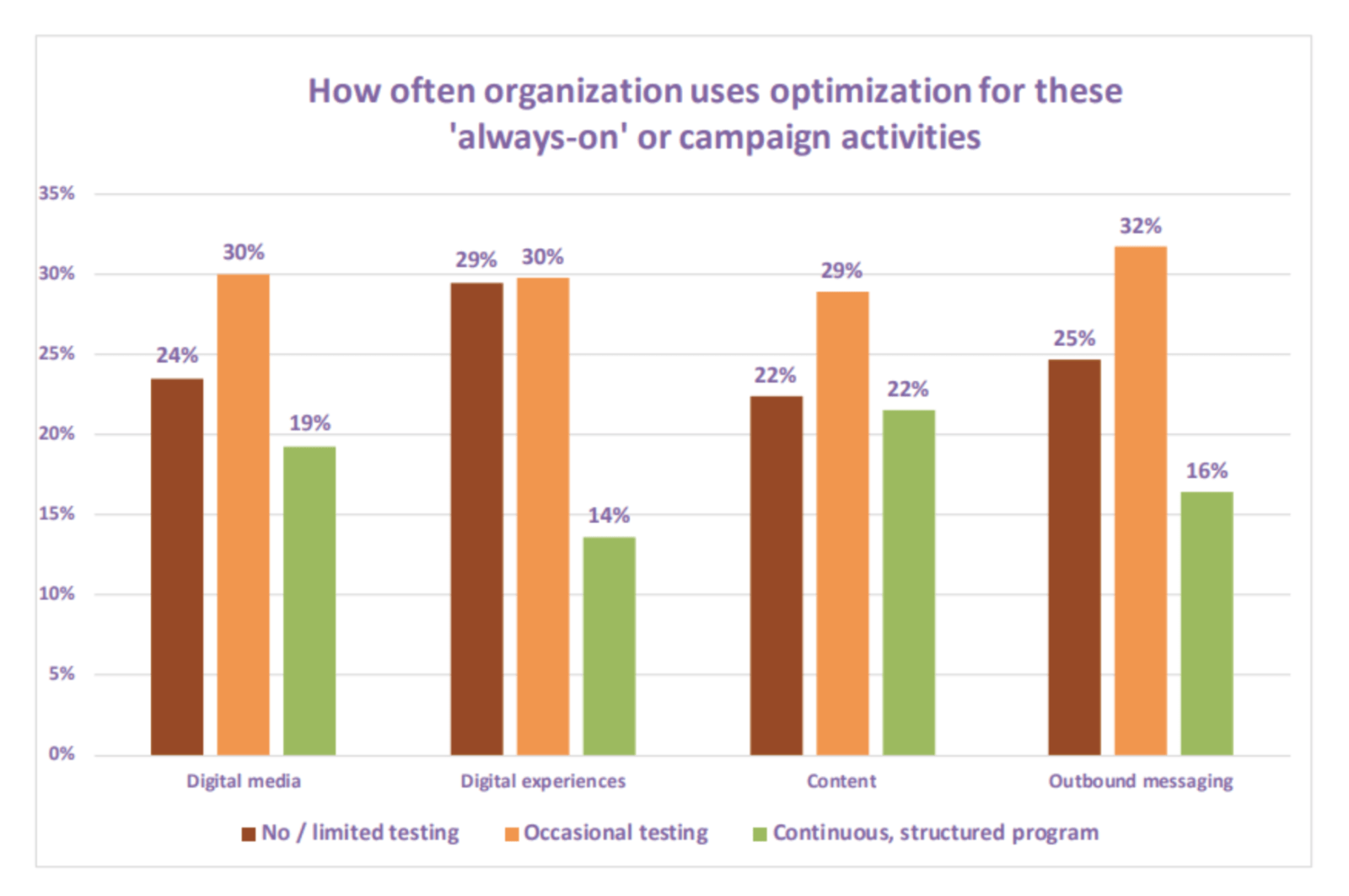
Recommendation 15. Review the use of conversational digital marketing communication styles to increase conversion
When discussing the Gartner hype cycle we noted the importance of conversational marketing. This is sometimes perceived narrowly as chatbots which have their place, but have not proved popular with end-users because generally, the AI is not intelligent enough and human-assisted chat and sales support has proved more practical in practice. In B2B categories, the growth of conversational marketing and sales (or revenue acceleration) platforms such as Drift, Intercom and Lyft looks set to continue.
Prompting micro-interactions doesn’t require a full chat-like conversation, it can be a simple dialogue based on an onboarding interaction like this from Grammarly which is aimed at segmenting customer journeys.
Recommendation 16. Dark patterns: Consider the ethical and legal ramifications
Dark Design Patterns emerged from the growth hacking mindset where CRO teams have targets to increase conversion and guardians of the brand aren’t sufficiently involved. With many of the obvious wins from CRO achieved, there may be more tests that involve obfuscation, but this reflects poorly on the brand and with more specific privacy or distance selling laws catching up with these practices.
It might be thought that dark patterns are limited to smaller ‘get rich quick’ schemes, but they also offer big advantages to large brands who test techniques. Econsultancy gives these recent examples of large brands using Dark Patterns including: Airbnb excluding additional amounts, including cleaning fees and Airbnb’s service fee and Amazon prompting new customers who check out with a default order qualifying for free shipping.
It’s ironic, but a recognition of the problem that Tim Allen VP, Design at Airbnb suggests that Brands should champion inclusion. He says: “Designers, business leaders, and engineers will continue to embrace inclusivity and the need for brands to reflect a rich diversity of perspectives. This will lead to increased advocacy for human interests in technology; a more intentional integration of ethics, equity, and justice into design decision-making; and the dismantling of sustained bias within algorithms, products, and services”.
Recommendation 17. Review the sophistication of your website personalisation
According to a SmarterHQ, 72% of consumers say they now only engage with marketing messages that personalised and tailored to their interests.
Despite this, the same report also reveals that 86% of consumers are concerned about their data privacy. Of these, Baby Boomers and Gen X are the least trusting consumers, with Millennials and Gen Z being around 47% more trusting than their older counterparts.
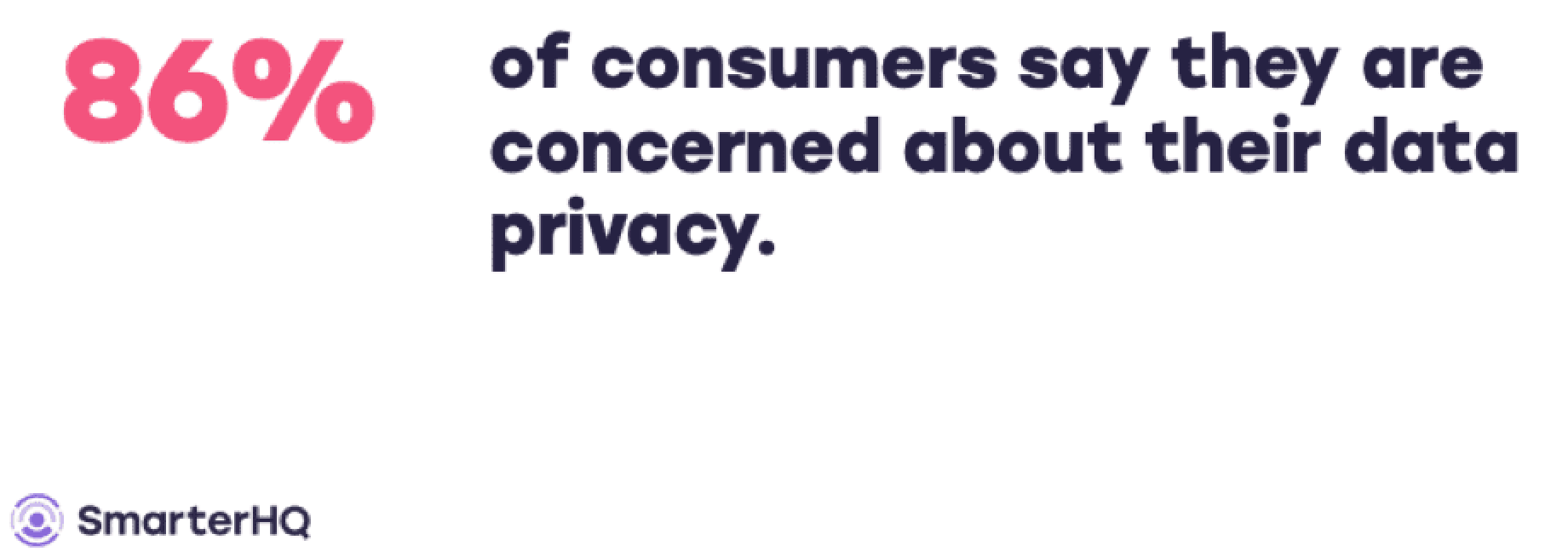
80% of self-classified frequent shoppers will only shop with brands who personalize their experience. So, it becomes important to explain the value proposition of data collection to reassure consumers about privacy and understand what is valued most.
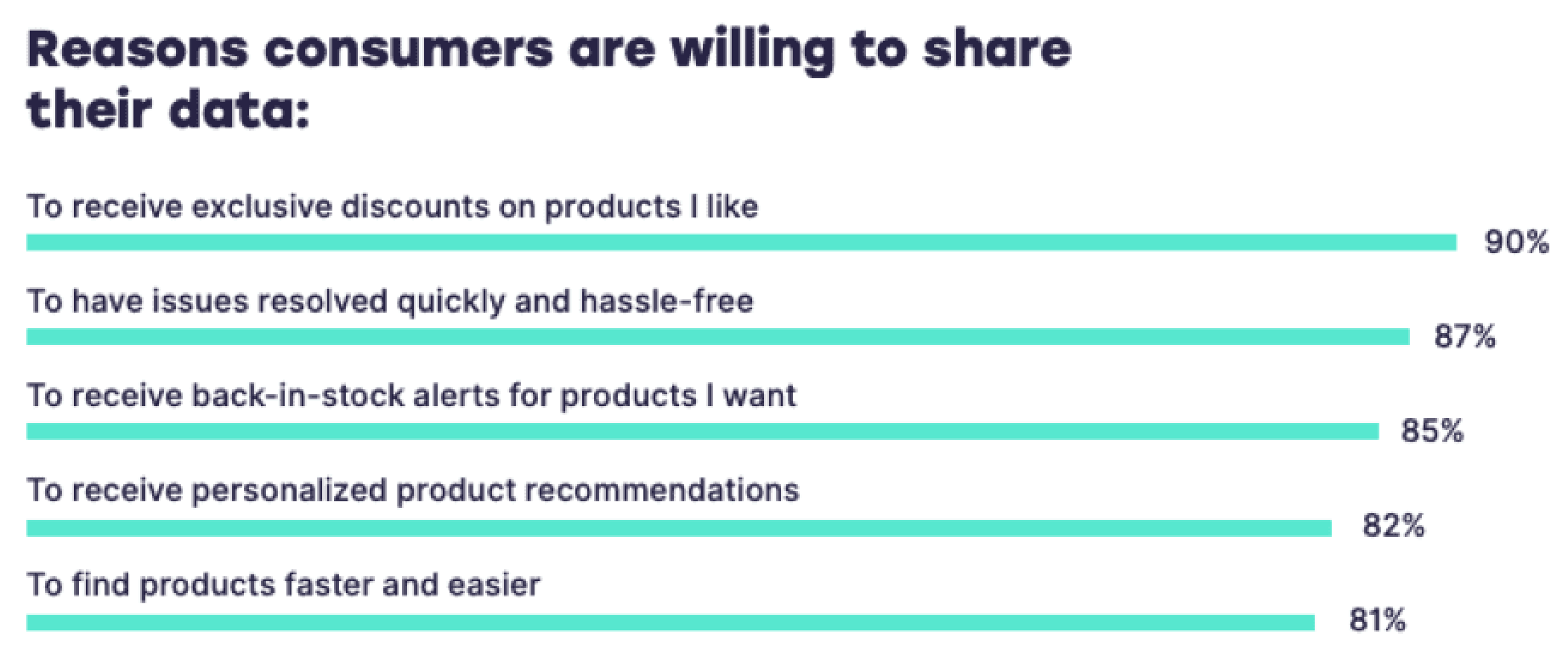
Beyond retail and transactional e-commerce, use of personalization for recommended content remains surprisingly low, but this will increase as platform providers make it easier. For example, HubSpot’s Smart Content criteria to personalise web pages and email, but many people use WordPress for their CMS like us which doesn’t have plugins to support this.
Recommendation 18. Omnichannel commerce including social commerce
There are clear signs that social commerce will continue to grow. North American e-commerce agency Absolunet has identified the following key signs of the popularity of social commerce:
- 87% of e-commerce shoppers believe social media helps them make a shopping decision.
- 1 in 4 business owners are selling through Facebook.
- 40% of merchants use social media to generate sales.
- 30% of consumers say they would make purchases directly through social media platforms.
ENGAGE : Improve customer communications to increase loyalty and advocacy
Recommendation 19. Increase use of techniques to understand and improve customer journey effectiveness
Our Digital Marketing Optimization research shows the popularity of AB testing to support conversion, but techniques for assessing voice of the customer are relatively rarely used.
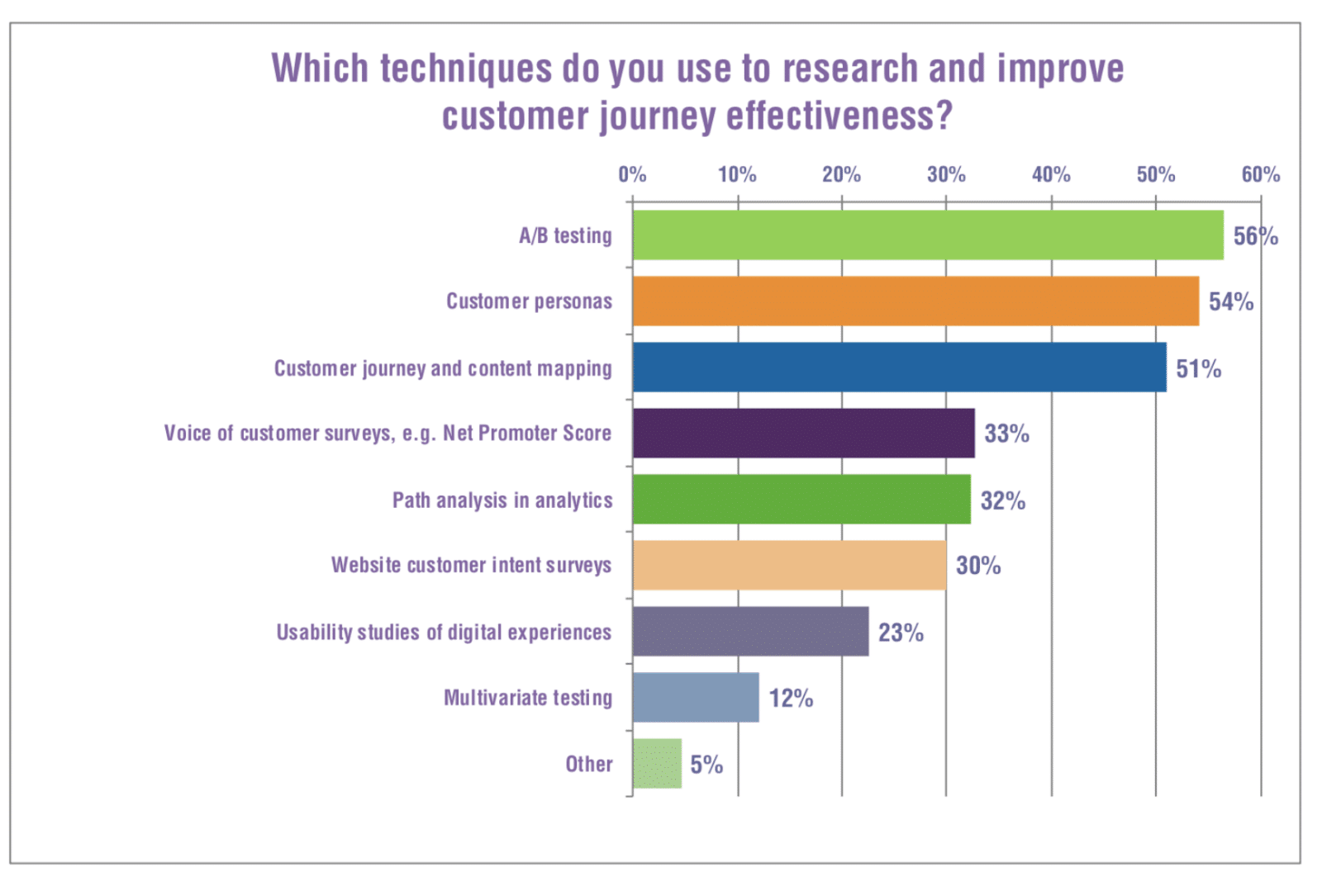
Recommendation 20. Review the relevance of micro-communities
Referring to communities of designers, UX Design give an assessment of online communities that many marketers will be able to relate to:
“The promise of large online communities where designers can talk freely and learn from one another has not panned out… The reality of online communities is quite different from what they initially seem to promise.
Groups with thousands of designers either become inactive once members realize they have little in common, or remain active but end up devolving into an endless stream of self-promotion and content marketing pieces.
Discussion threads on Reddit or DesignerNews don’t delve deep enough into a topic because they are held back by miscommunications between participants. Design Twitter slowly becomes a shallow stream of polarizing, angry, and loud voices.
Instead, micro-communities are on the rise. Pick one or two trusted colleagues, select a few mentors outside of your bubble, and build your own sounding board if you are looking to have more honest and in-depth conversations”.
Recommendation 21. Assess relevance of community insights platforms
For brands, support communities are only relevant for some sectors such as telecoms, so the trend we see in larger brands is gaining customer insights by developing a consumer insight panel supported by platforms like Qualtrics or Vision Critical – see these examples of customer engagement plans.
Recommendation 22. Improving email personalization through lifecycle and behavioural segmentation
Our email marketing lifecycle targeting infographic shows the fantastic potential for using personalised email marketing to deliver more relevant communications through the customer lifecycle.
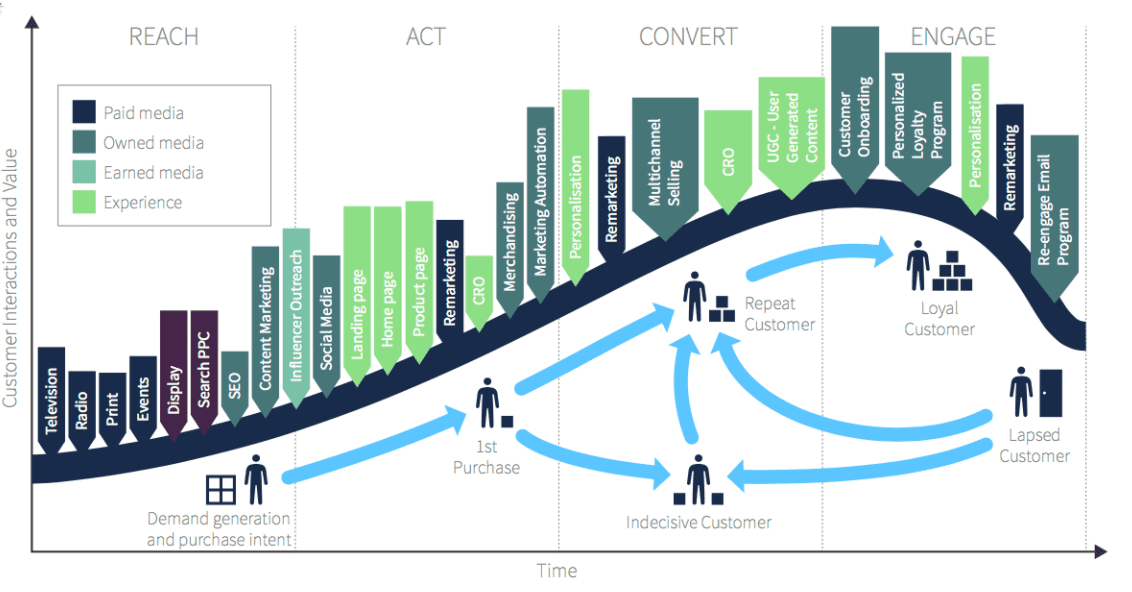
Reviewing case studies of how businesses are using email marketing automation shows signs of more sophisticated techniques, but if we’re honest these automated techniques like welcome sequences and basket abandons have been possible for over 15 years, so we can’t get too excited about them, it sometimes seems as if just the labels have changed… We now talk about ‘lifecycle email marketing’ and sales cadences within B2B nurturing. These do highlight the trend to increased integration between channels though and email marketing to prospects and customers is now treated as a channel that is better integrated with web, social, display ads and personal ads.
However, these techniques are exciting for the businesses and marketers involved if they are novel and should result in improvements in engagement and sales. This lifecycle email marketing case study of Nike in Hong Kong from our partner Emarsys is pertinent. Automation of 10 new lifecycle campaigns and improved relevance and targeting increased website visits by +32.5% and automation revenue by 110% (abandoned basket campaigns were already in use). Lifecycle segmentation included categories like purchase lifecycle groups, first-time buyers, inactive, and defecting customers.
Recommendation 23. Applying Big Data analysis and machine learning to improve customer email targeting and website personalization
More novel is the use of these techniques, which weren’t practical 10 years ago. Previously, many email marketing systems were limited to reporting on individual newsletter and campaign email broadcasts. These are still the ‘bread and butter’ of email marketing for many marketers. However, a more sophisticated approach (which I have been recommending for over 15 years for more advanced email marketers) is to consider lifecycle engagement reporting and targeting based on this. Predictive analytics can be used to identify:
- Best send times to engage an individual (can be based when they originally bought or subscribed, but this can be refined through time)
- Best timing and offer for follow-up communications based on analysis of latency (average interval of response)
- Best product or category combinations from cluster-based segmentation.
Recommendation 24. Using machine learning to create more engaging communications
In addition to these targeting techniques, machine learning has a role to play by boosting relevance and speaking in a more personal tone. Persado is an interesting tech here.
Persado uses a copy impact classification applied to existing copy, which is used to tailor copy and calls-to-action on an individual basis.


Another example of AI application is nutrition and wellness retailer Holland & Barrett using AI to provide better-targeted emails. This Machine Learning approach from Tinyclues goes beyond optimising copy using a tool like Persado, instead, it also involves targeting based on the behaviour of individuals to create more micro-targeted campaigns.
Plan: Creating a strategy to drive improvements
Recommendation 25. Put a plan place to support digital marketing transformation
Digital marketing research revealed many challenges in terms of how digital marketing is run in companies today. Problems included a lack of focus on integrated strategy, testing, and optimization and structural issues like teams working in silos or a lack of skills in integrated communications.
To counter these types of problems and to make the most of the opportunities for growing a business through digital marketing, many businesses are now putting a digital transformation programme in place.
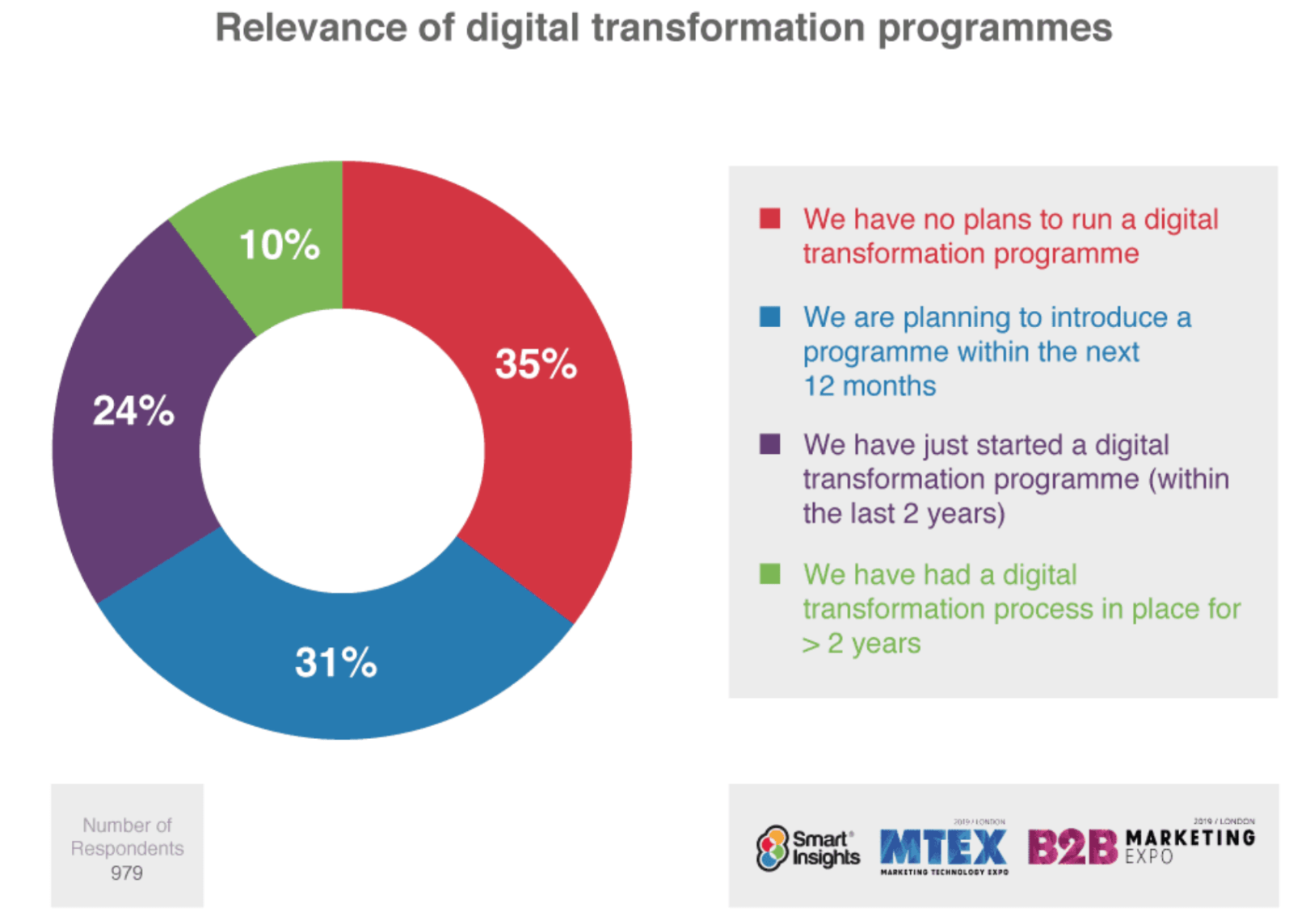
The aim of digital transformation is to develop a roadmap to improve digital capabilities and skills, while at the same time, integrating ‘always-on’ digital marketing activities with brand and product marketing in the business.
This chart from the research shows that many businesses are active in transformation to try to achieve this aim through the success factors covered in this article.
We hope you enjoyed this article, intended to help improve our client’s profitability. It reflects the care SwiftERM offer. If you haven’t already done so, then please enjoy a FREE month’s trial and let us know what you think. Register
Further articles you may enjoy:
The post Digital marketing trends: recommendations to implement appeared first on SwiftERM.

Leave a Reply